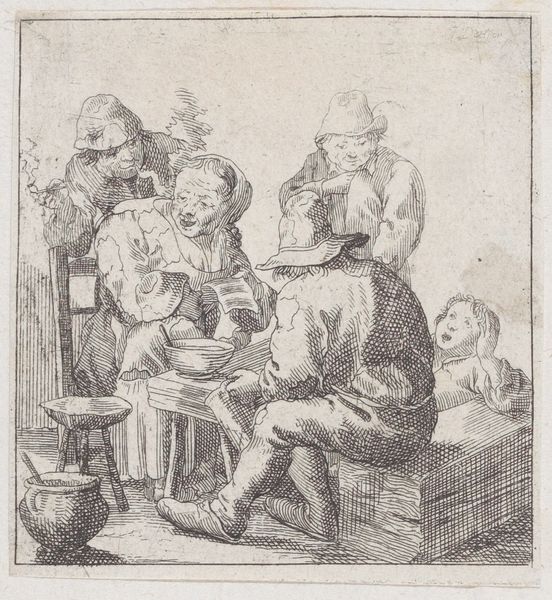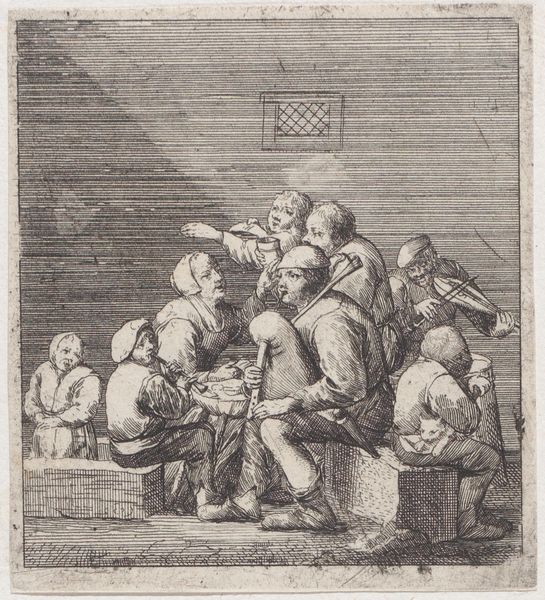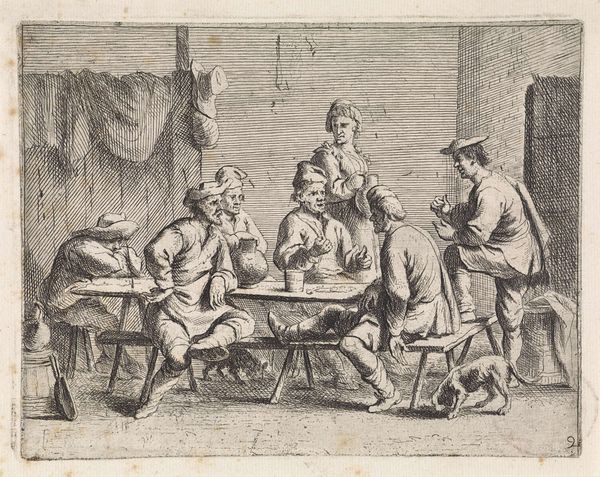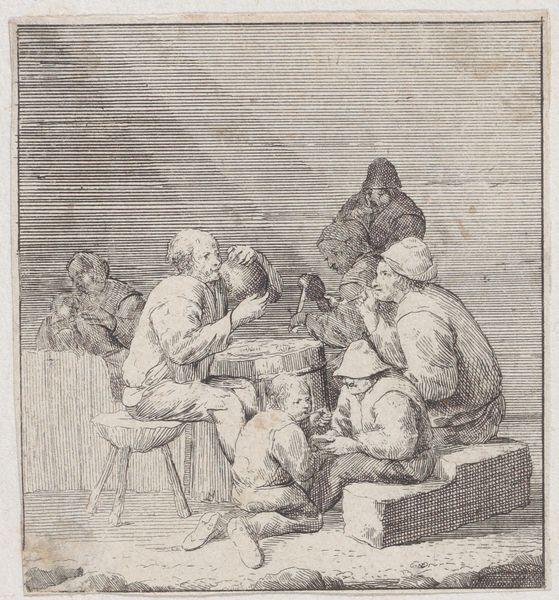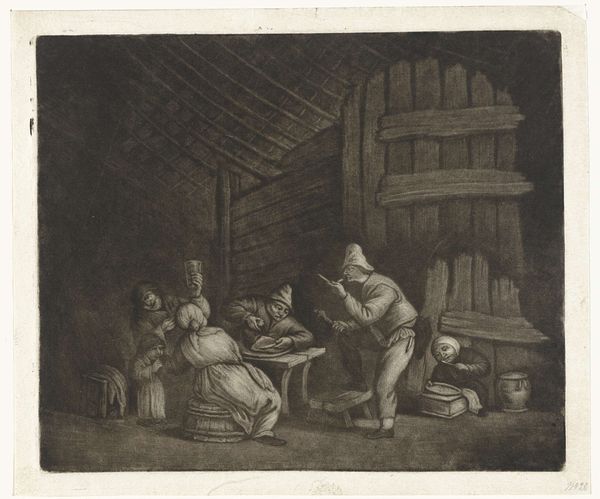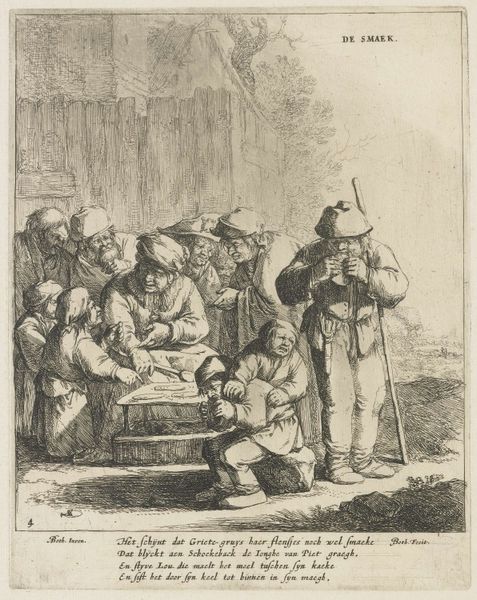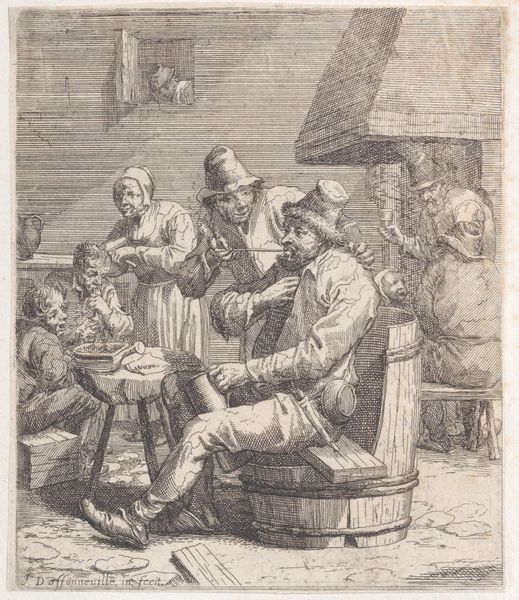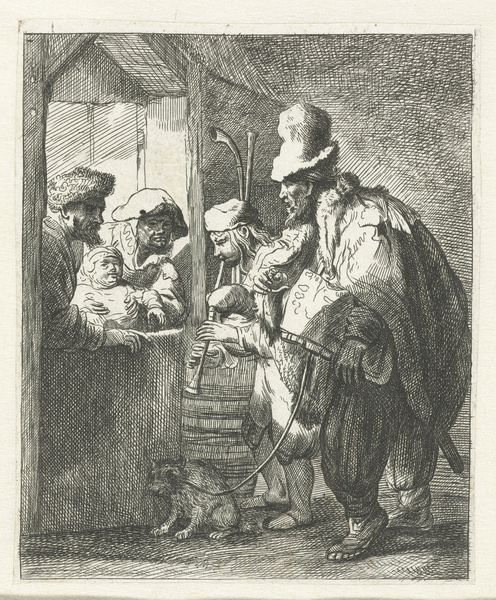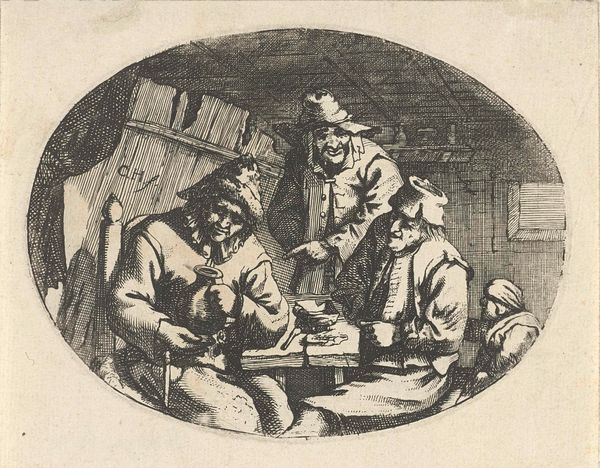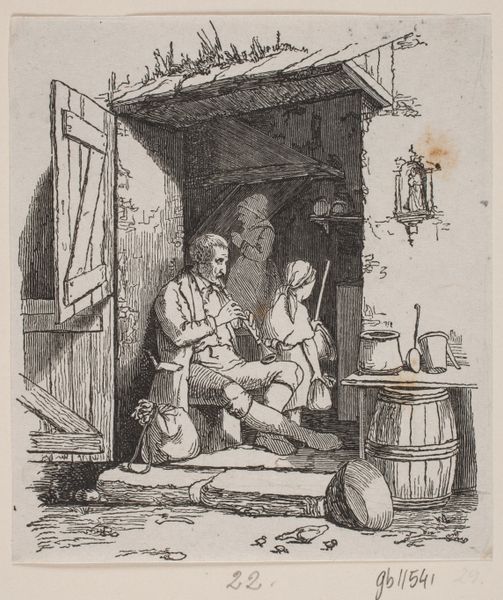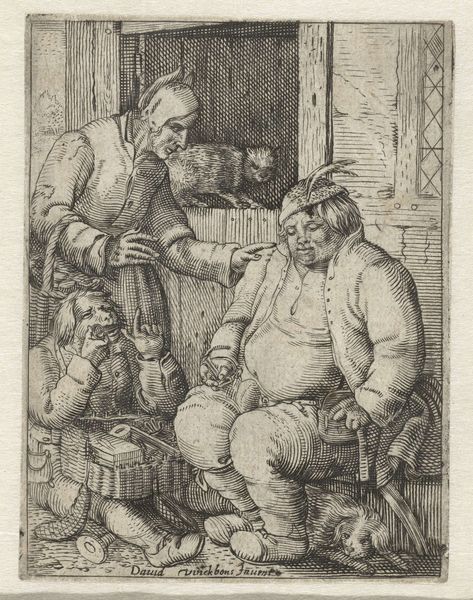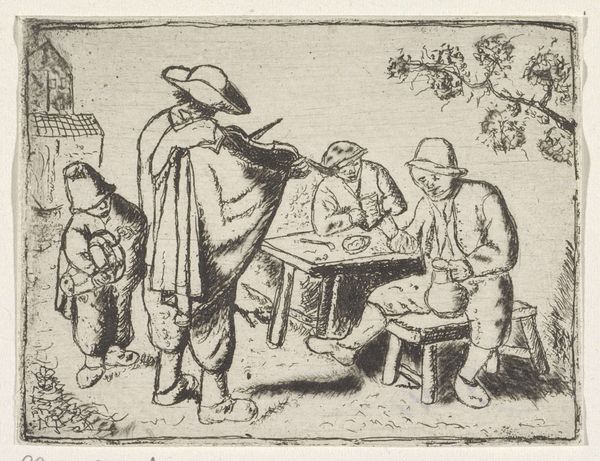
A family of four peasants gathered before the fireplace 1635 - 1675
0:00
0:00
drawing, print, engraving
#
drawing
#
baroque
# print
#
genre-painting
#
engraving
Dimensions: Sheet (Trimmed): 3 7/16 × 3 3/16 in. (8.8 × 8.1 cm)
Copyright: Public Domain
Editor: Here we have Jacques Dassonville’s print, "A Family of Four Peasants Gathered Before the Fireplace", dating sometime between 1635 and 1675. The composition strikes me as quite intimate, with the figures clustered together in this small space. What is your take? Curator: Looking at the work formally, observe how Dassonville structures the composition using line. The etching relies heavily on the density and direction of these lines to create shading and form. Consider, for example, the stark contrast between the closely packed lines in the upper right corner of the print, forming the interior wall, against the very articulated modeling of each of the faces. How do these techniques serve to shape your perception of the artwork? Editor: I notice how the cross-hatching intensifies in the darker areas, creating depth and volume, but I didn’t really connect it to how the faces appear. The linear precision almost makes the figures feel like sculptures, which is compelling, considering they're supposed to be humble peasants. Curator: Precisely. It also leads to questions. Is the intention purely descriptive, a mimetic exercise? Or are there specific relationships proposed by this contrast between density and articulation? For instance, examine the rendering of the fire and how the flames are less about representing actual fire than establishing compositional balance with the subjects in the foreground. What does it mean for the light? Editor: So, it's less about accurately depicting a peasant scene and more about the formal play of line and texture, creating this carefully balanced…design, almost? I hadn’t considered the fire as a structural element before, but now I see how its shape complements the figures' placement. Curator: Yes, Dassonville presents not a mirror to reality but a structured, composed vision wherein each element, regardless of its representative value, contributes to a unified aesthetic experience. How does this change your understanding of the piece now? Editor: It’s less a snapshot and more a carefully arranged still life! Thanks. Curator: Exactly! Focusing on the forms frees us from simply reading the work as historical document and encourages deeper appreciation of Dassonville's artistic choices.
Comments
No comments
Be the first to comment and join the conversation on the ultimate creative platform.
